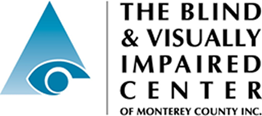Articles on Blind Etiquette
Etiquette
By American Foundation for the Blind
“Etiquette” may seem a rather formal term to describe the give and take of our interactions with friends and family; but it really is just another way of describing the thoughtful, considerate behavior that we expect to receive from others and give to them.
Until a friend or relative becomes visually impaired, you may never have known anyone who could not see well or at all. So you had no reason, or at least no immediate need, to think about the subtle differences between considerate behavior toward a sighted person and someone with limited vision.
Read more +
These aren’t major differences—the same affection, politeness and thoughtfulness apply—but there are several basic ground rules that will make your day-to-day contacts with a friend or relative who is visually impaired easier, more relaxed, and truly helpful. This section outlines the key points to keep in mind when you are with someone whose vision is impaired, including:
- Acting as a sighted guide
- Respecting the person’s ability to do things for himself or herself
- Giving directions
- Speaking directly
- Maintaining a conversation
Source: http://www.afb.org/info/friends-and-family/etiquette/23
Read less -
Blind etiquette: six ways to be gracious around people with visual impairments
By STEFANIE CLOUTIER – November 25, 2014
There’s no “secret” to interacting with people who are blind. They just want to be treated like everybody else, with courtesy and respect. So relax and act naturally. Just be considerate of the fact that you can see and they cannot. Here are six suggestions that will make your next interaction with someone who is blind easier and more comfortable:
Read more +
- If you think someone who is blind may need help navigating, ask first. It’s jarring for anyone to be unexpectedly grabbed or pulled, but especially so for someone who can’t see who’s doing the grabbing. By asking, you give the person a chance to say “yes please” or “no thank you.”
- If your help is accepted, allow him or her to grasp your arm just above the elbow. That makes it easier for the person to feel your movements and follow on their own terms.
- If you see someone who is blind or visually impaired about to encounter danger, be calm and clear when you warn the person. Use specific language such as “there’s a curb right in front of you,” or “the door in front of you is closed” instead of “watch out!” Also, use directional language such as “to your left” or “directly behind you” rather than “it’s over here.” Think about what information you would want to know if you couldn’t see.
- Identify yourself when approaching someone who is blind, or when entering a room with them. Even if the person has met you before, he or she may not recognize you by your voice. In a group setting, address the person by name so they know when you’re talking to them. And inform the person when you depart, so they don’t continue the conversation to an empty room.
- Don’t pet or distract a working guide dog. These dogs are busy directing their owners and keeping them safe. Distracting them makes them less effective and can put their owners in danger.
- Use “people first” language. No one wants to be labeled by how they are different. It’s kinder, and more accurate, to say “a person who is blind” rather than “a blind person.” We are all people first.
A little understanding and sensitivity goes a long way. By following these suggestions, you’ll find that making a human connection is easy. It doesn’t matter if one person can see and the other can’t.
Read less -
Etiquette to offer people who are blind
By Karen Levin, VRT
If you see a blind person who seems to need help, offer your services. Speak directly to them, not through a third party. Identify yourself and let him or her know you’re talking to them. If your help is refused, don’t be offended.
If you assist an individual who is blind, offer your arm. They will take your arm and this will allow them to follow the motions and find your elbow and grasp it like a letter “c” or holding a soda can.
Read more +
When you’re leaving a person who is blind, say so. I’m going to get some lemons in the produce section and will be back in 5 minutes. If you are shopping with them, don’t leave the blind person stranded. Tell them that there is a Starbucks located at the front of the store, in the middle, which has chairs and tables.
When giving directions to a blind person it is important to give them specific information such as: turn to your right. Don’t point and say over there. It is important to provide specific names (streets, buildings) to places where the individual is familiar with.
When serving or eating with a person who is blind, tell him or her what is being served, use the clock technique. Explain that his/her potatoes are at the 6 o’clock position and that the meat is at the 12 o’clock position.
An important thing to remember when working with a blind individual is to leave things where you find them. Moving items for the visually impaired makes it harder for them to locate the object and they will be searching for a longer period of time until they find it.
Remember that common sense and sensitivity are important when interacting with visually impaired individuals.
Read less -
